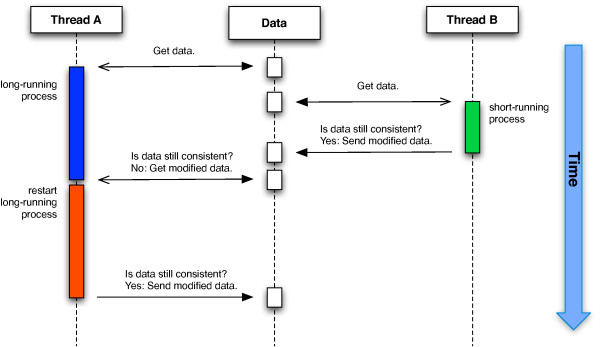Figure 2.
Software transactional memory. Software transactional memory circumvents the need for explicit locking of resources. All changes to the state of data are encapsulated in transactions, i.e. every thread has a copy of its working data and can change its value. During submission of the changes to the shared memory, the consistency of the internal state is checked. If no interim changes occurred, the submission is performed. If another thread working on another copy of the same data has meanwhile submitted its changes, the transaction is rejected and restarted with a new copy of the data.

